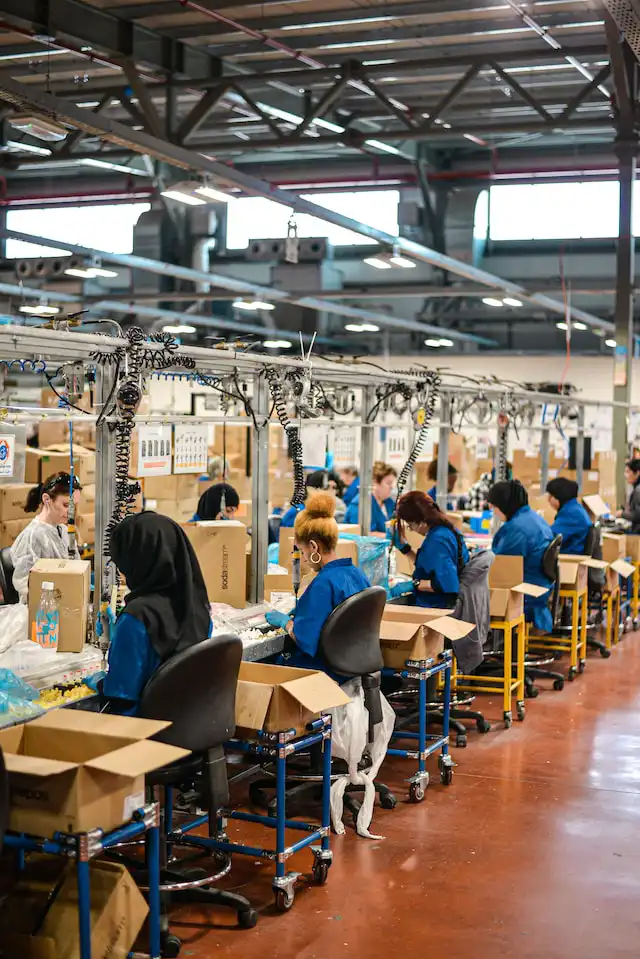
Philippines Apparel and Footwear Market Outlook to 2019 - Increase in Influx of Foreign Brands
Region:Asia
Product Code:KR364
December 2015
144
About the Report
The market of apparel and footwear products in the Philippines has been evolving at a brisk rate. Strategic partnerships, expansion of retail chains, improvement in product portfolio and increasing brand awareness have been significantly changing the market. The revenues of the have been estimated to elevate to USD ~ million by the year 2019 and represent a CAGR of ~% during 2015-2019. The trade scenario of apparel and footwear products has also showcased the untapped potential of the Filipino market. The market has been dominated by low-cost branded imports from China. On the other hand, the export of products from the Philippines has found major markets in Japan and North America. Moreover, with the influx of more foreign apparel and footwear manufacturing companies, exports are likely to increase in the coming five years. As an effect of this, the competition in the domestic market has been expected to increase which will result in price wars amongst retailers.
The apparel market in the Philippines, which has been driven by the demand for international products and an increase in discounts, has witnessed market revenues of USD ~ million in the year 2014. With the increase in the influx of foreign brands and growth in disposable income of Filipinos, the revenue increased at a CAGR of ~% during the time frame 2009-2014. Each segment in the apparel market has been subject to a gamut of factors such as an increase in the young working population, elevated preference for foreign brands, and growth of the e-commerce market that play an important role in determining the number of sales in the industry.
The footwear market in the Philippines has bolstered at a CAGR of ~% during 2009-2014 whereas the footwear market has expanded at ~% during the same time period. Footwear production in the Philippines has been majorly propagated through manual and semi-mechanized processes. A large number of domestic companies have utilized leather as the prime raw material for footwear. Two major organizations, namely, the Philippine Footwear Federation and Sigla ni Kapitan Moy operate in the industry and have acted as business support organizations for footwear manufacturers. The footwear market in the Philippines has expanded at a CAGR of 6.9% from 2009-2014 and registered revenue from sales at USD ~ million in the year 2014. The major factors which have assisted in the growth of the industry include the preference of high-valued footwear products along with a lack of replacement demand.
Sportswear Market
Sportswear has been measured as one of the most comfortable and lucrative items in the Philippines apparel and footwear market. Filipinos have been accustomed to wearing casual and comfortable clothing which possesses brand value and also caters to their unique style of fashion. The market of sportswear has witnessed a surge in revenues from USD ~ million in 2009 to USD ~ million in 2014. The CAGR recorded during this review period has sustained at 11.5%. Filipino women have taken more part in activities such as workout routines, yoga exercises, and sporting activities in comparison to their male counterparts. This has steered the sales of women’s sportswear products in the local market.
The growth of online retail of apparel and footwear products through portals such as Lazada and Zalora will act as a key variable in the development of the market in the future. The growth in the number of internet and smartphone users in the country has propelled the growth of the e-commerce market. This trend is expected to continue in the next five years. The revenue from sales of online apparel and footwear products has grown at a CAGR of ~% during the time period 2009-2014 and is continuing to expand at a CAGR of ~% in the next five years till 2019. Low penetration of credit cards in the Philippines has not been able to withhold the growth of the e-commerce industry. Online retail stores have developed the cash-on-delivery mechanism to assist customers and encourage a higher usage of the internet for retail.
Key Topics Covered in the Report:
- The market size of the Philippines apparel and footwear market.
- The market size of the Philippines apparel market.
- The market size of the Philippines footwear market.
- The market size of the Philippines online apparel and footwear market.
- The market size of the Philippines sportswear market.
- Market segmentation of the Philippines apparel and footwear market on the basis of product category, marketplace, organized and unorganized sector, product usage, seasonal demand, type of business, mechanization facilities, type of fabric and procurement source of raw materials.
- Customer profile in Philippines apparel and footwear market on the basis of age distribution, gender category and income class.
- SWOT Analysis of Philippines apparel and footwear market.
- PEST Analysis of Philippines apparel and footwear market.
- Trends and Development in the Philippines apparel and footwear market.
- Competitive landscape of major brands and retailers in the Philippines apparel and footwear market.
- Analyst recommendations.
- Future outlook and projections of the Philippines apparel and footwear market on the basis of revenues.
Products
Mens Apparel, Kids Apparel, Womens Apparel, Cotton Apparel, Mens Footwear, Kids Footwear, Womens Footwear, Seasonal Demand, Online and Offline Marketplace, Per Capita Expenditure, Local and Imported Products, Casual, Formal Clothing, Running Shoes, Regular Shoes, Sports Shoes
Companies
Bench, Penshoppe, M&Co, Golden ABC, SM Group, Robinsons Retail, H&M, Forever 21, Giordano, CottonOn, Nike, Adidas, Puma, GB Shoes, Rusty Lopez, Converse, Uggs, Vans, Toms, Lazada, Zalora, eBay
Table of Contents
1. Philippines Apparel and Footwear Market
1.1. Philippines Apparel and Footwear Market Introduction
1.1.1. Historical Overview
1.1.2. Current Outlook
1.2. Philippines Apparel and Footwear Market Value Chain Analysis
1.3. Philippines Apparel and Footwear Market Size, 2009-2014
1.3.1. By Revenue, 2009-2014
1.4. Philippines Apparel and Footwear Market Segmentation
1.4.1. By Type of Product – Apparel & Footwear, 2009-2014
1.4.2. By Marketplace – Online & Offline, 2014
1.4.3. By Seasonal & Non-Seasonal Demand, 2014
1.4.4. By Income Group, 2014
2. Philippines Apparel Market
2.1. Philippines Apparel Market Introduction
2.2. Philippines Apparel Market Size, 2009-2014
2.2.1. By Revenue, 2009-2014
2.2.2. Per-Capita Expenditure on Apparel, 2009-2014
2.3. Philippines Apparel Market Segmentation
2.3.1. By Gender Category – Male & Female, 2014
2.3.2. By Age Group – Below 14 Years & above 14 years, 2014
2.3.3. By Seasonal & Non-Seasonal Demand, 2014
2.3.4. By Fabric – Cotton & Others (Silk, Linen & Others), 2014
2.3.5. By Distribution Channel – Online & Offline, 2014
2.3.6. By Type of Business – Sole Proprietorship, Corporation & Partnership, 2014
2.3.7. By Location of Raw Materials – Local & Imports, 2014
2.3.8. By Mechanization Facilities – Semi-mechanized, Fully mechanized & Manual, 2014
2.3.9. By Organized & Unorganized Sector, 2014
2.3.10. By Usage – Formal & Casual, 2014
2.4. Philippines Apparel Market Trade Scenario, 2009-2014
2.4.1. By Exports (Value and Major Destinations), 2009-2014
2.4.2. By Imports (Value and Major Destinations), 2009-2014
2.5. Trends and Developments in Philippines Apparel Market
Preference of Casual Wear
Expansion of Retail Outlets
Modernized Fashion Outlook
Demand Oriented Design of Apparels
2.6. Competitive Snapshot of Major Players in Philippines Apparel Market
2.7. Philippines Apparel Market Future Outlook and Projections, 2015-2019
3. Philippines Footwear Market
3.1. Philippines Footwear Market Introduction
3.2. Philippines Footwear Market Size, 2009-2014
3.2.1. By Revenue, 2009-2014
3.2.2. Per-Capita Expenditure on Footwear, 2009-2014
3.3. Philippines Footwear Market Segmentation
3.3.1. By Gender Category – Male & Female, 2014
3.3.2. By Age Group – Below 14 & above 14 years, 2014
3.3.3. By Seasonal & Non-seasonal Demand, 2014
3.3.4. By Footwear Categories – Running/Walking, Regular, Sports & Others, 2014
3.3.5. By Material – Leather and Rubber, Synthetic & Others, 2014
3.3.6. By Distribution Channel – Offline & Online, 2014
3.3.7. By Type of Business – Sole Proprietorship, Corporation & Partnership, 2014
3.3.8. By Location of Raw Materials – Local & Imports, 2014
3.3.9. By Organized & Unorganized Sector, 2014
3.3.10. By Usage – Formal & Casual, 2014
3.4. Philippines Footwear Market Trade Scenario, 2009-2014
3.4.1. By Exports (Value, and Major Destinations), 2009-2014
3.4.2. By Imports (Value and Major Destinations), 2009-2014
3.5. Trends and Developments in Philippines Footwear Market
Preference for Casual Footwear
Focus Towards Strengthening of Distribution Channels
Lack of Replacement Demand
Preference for High Valued Brands
3.6. Competitive Snapshot of Major Players in Philippines Footwear Market
3.7. Philippines Footwear Market Future Outlook and Projections, 2015-2019
4. Philippines Sportswear Market Introduction
4.1. Philippines Sportswear Market Size, 2009-2014
4.1.1. By Revenue, 2009-2014
4.1.2. Per-Capita Expenditure on Sportswear, 2009-2014
4.2. Philippines Sportswear Market Segmentation, 2009-2014
4.2.1. By Gender Category – Male & Female, 2014
4.2.2. By Age Group – Below 14 & above 14 years, 2014
4.2.3. By Seasonal & Non-seasonal Demand, 2014
4.2.4. By Organized & Unorganized Sector, 2014
4.3. Competitive Landscape of Major Players in Philippines Sportswear Market
4.4. Trends and Developments in Philippines Sportswear Market
Domination of International Players
Growth in Fitness Activities
Tech-enabled Sportswear Designs
Extensive Product Base
4.5. Philippines Sportswear Market Future Outlook and Projections, 2015-2019
5. Major Distribution Networks in Philippines Apparel and Footwear Market
6. Philippines Online Apparel and Footwear Market Introduction
6.1. Philippines Online Apparel and Footwear Market Size, 2009-2014
6.1.1. By Gross Merchandise Value, 2009-2014
6.2. Philippines Online Apparel and Footwear Market Segmentation, 2014
6.2.1. By Product Category – Apparel & Footwear, 2014
6.3. Competitive Landscape of Major Players in Philippines Online Apparel and Footwear Market
6.4. Trends and Developments in Philippines Online Apparel and Footwear Market
Expansion of Traditional Stores to Online Retailing
Increase in Online Retailing through Cash on Delivery System
Amplification of Deal-Sites
Elevated Preference for One-Stop-Shop Portals
6.5. Major Challenges in Philippines Online Apparel and Footwear Market
Lack of Robust Ecosystem
Payment Fraud
Ineffective Cross-Border Commerce
Competitive Pricing
6.6. Philippines Online Apparel and Footwear Market Future Outlook and Projections, 2015-2019
7. Trends and Developments in Philippines Apparel and Footwear Market
Advancement of Technology
Bifurcation of Product Portfolio by Giant Players
Customer Acquisition through Lucrative Schemes
Rising Exports
8. Growth Drivers of Apparel and Footwear Market
Presence of International Players
Preference of International Brands
Growth of Textile Industry
Growth of Distribution Channels
Capital Intensive Textile Sector
9. Major Challenges Faced in Philippines Apparel and Footwear Market
Consumer Perception
Soaring Cost of Electricity
Wage Increases
High Competition
Natural Calamities and Other Local Factors
Low Internet Penetration
10. Philippines Apparel and Footwear Market Analysis
10.1. SWOT Analysis
Strengths
Weakness
Opportunities
Threats
10.2. PEST Analysis
Political Environment
Economic Environment
Social Environment
Technological Environment
10.3. Porter’s Five Forces Model
Measures to Overcome Porter’s Five Forces
11. Philippines Apparel and Footwear Market Future Outlook and Projections, 2015-2019
11.1. Analyst Recommendation
Entry Barriers in the Industry
Opportunities
11.2. Cause and Effect Analysis
12. Macro-economic Variables Affecting Philippines Apparel and Footwear Market, 2009-2019
12.1. Personal Disposable Income of Philippines, 2009-2019
12.2. Population Demographics by Age of Philippines, 2009-2019
12.3. Export, Import and Exchange Rate Fluctuations in Philippines, 2009-2019
12.4. Gross Domestic Product of Philippines, 2009-2019
12.5. Philippines E-Commerce Market, 2009-2019
12.6. Number of internet users in Philippines, 2009-2019
13. Appendix
13.1. Market Definition
13.2. Abbreviations
13.3. Research Methodology
Data Collection Methods
Approach
Variables (Dependent and Independent)
Multi Factor Based Sensitivity Model
Final Conclusion
13.4. Disclaimer
Why Buy From Us?

What makes us stand out is that our consultants follows Robust, Refine and Result (RRR) methodology. i.e. Robust for clear definitions, approaches and sanity checking, Refine for differentiating respondents facts and opinions and Result for presenting data with story

We have set a benchmark in the industry by offering our clients with syndicated and customized market research reports featuring coverage of entire market as well as meticulous research and analyst insights.

While we don't replace traditional research, we flip the method upside down. Our dual approach of Top Bottom & Bottom Top ensures quality deliverable by not just verifying company fundamentals but also looking at the sector and macroeconomic factors.

With one step in the future, our research team constantly tries to show you the bigger picture. We help with some of the tough questions you may encounter along the way: How is the industry positioned? Best marketing channel? KPI's of competitors? By aligning every element, we help maximize success.

Our report gives you instant access to the answers and sources that other companies might choose to hide. We elaborate each steps of research methodology we have used and showcase you the sample size to earn your trust.

If you need any support, we are here! We pride ourselves on universe strength, data quality, and quick, friendly, and professional service.















